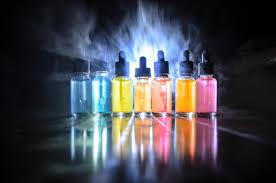E-Liquid Market is evolving as manufacturers develop premium flavor profiles, adjustable nicotine formulations, and high-quality ingredient compositions. Product innovations, improved delivery systems, and regulatory compliance are enabling broader adoption. Combining flavor diversity, personalization, and responsible production practices is driving growth across both mature and emerging regions worldwide.
Flavor Innovation as a Key Market Driver
Flavor diversity continues to be a primary driver in the E-Liquid Market. Traditional tobacco and menthol flavors remain popular, but consumers increasingly prefer fruit, dessert, beverage, and exotic blends. Manufacturers leverage natural extracts and advanced flavoring technologies to deliver authentic taste, safety, and consistency.
Limited-edition and seasonal flavors create excitement and foster brand loyalty. Personalized flavor options allow users to tailor vaping sessions, enhancing satisfaction and encouraging repeat purchases. Flavor innovation is essential for long-term market expansion.
Personalization Enhancing Consumer Engagement
Consumer demand for personalization is reshaping the E-Liquid Market. Adjustable nicotine levels, customizable flavor intensity, and variable vapor densities provide tailored experiences. This flexibility supports transitions from traditional smoking while promoting ongoing brand engagement.
AI-driven analytics and consumer insights help manufacturers anticipate preferences, optimize offerings, and maintain consistent quality. Personalized vaping experiences strengthen loyalty, improve satisfaction, and support long-term market growth.
Technological Advancements in Production
Technological innovation enhances product quality and manufacturing efficiency. Nicotine salts provide smoother inhalation and faster absorption. Automated blending and quality control systems ensure batch consistency while minimizing impurities.
Digital monitoring and smart production techniques allow precise formulation management, reduce waste, and maintain safety standards. These innovations enable manufacturers to respond quickly to trends while maintaining high-quality products.
Regulatory Compliance and Safety
The E-Liquid Market is heavily regulated to ensure consumer safety. Ingredient transparency, nicotine concentration limits, and adherence to safety standards build trust and credibility.
Brands adopting clean-label formulations, traceable sourcing, and pharmaceutical-grade components reinforce market reliability. Regulatory compliance supports long-term stability and assures consumers of product safety.
Sustainability and Environmental Responsibility
Sustainability is increasingly important in the E-Liquid Market. Companies are adopting recyclable packaging, refillable systems, and biodegradable materials. Plant-based glycerin and bio-derived flavoring agents appeal to environmentally conscious consumers.
Eco-friendly practices reduce environmental impact and enhance brand reputation. Combining sustainability with innovation positions companies competitively for long-term growth.
Regional Market Dynamics
North America and Europe dominate due to mature consumer bases, high disposable incomes, and regulatory clarity. Asia-Pacific is emerging as a high-growth region, fueled by urbanization, rising incomes, and growing vaping adoption.
Retail and online channels expand accessibility, while subscription-based models improve convenience and foster consumer loyalty, supporting sustained growth.
Future Outlook
The E-Liquid Market is projected to continue growing through flavor innovation, personalized experiences, and sustainability initiatives. Integration with smart vaping devices and digital tools will enhance user engagement.
Companies focusing on quality, regulatory compliance, and environmental responsibility are expected to lead market expansion, setting benchmarks for innovation while addressing evolving consumer expectations globally.
Conclusion
The E-Liquid Market is expanding through flavor innovation, personalized nicotine solutions, and sustainable practices. Prioritizing safety, quality, and consumer satisfaction ensures long-term global growth.


 SkillClick
SkillClick
